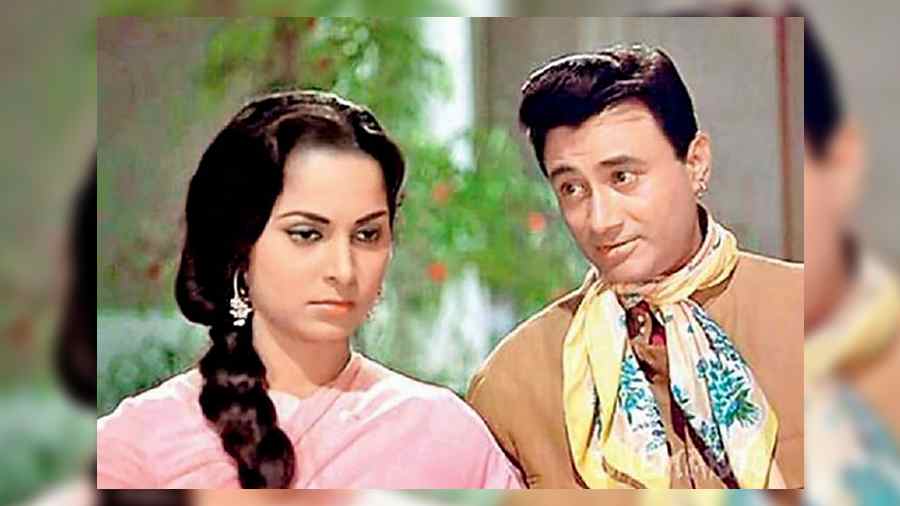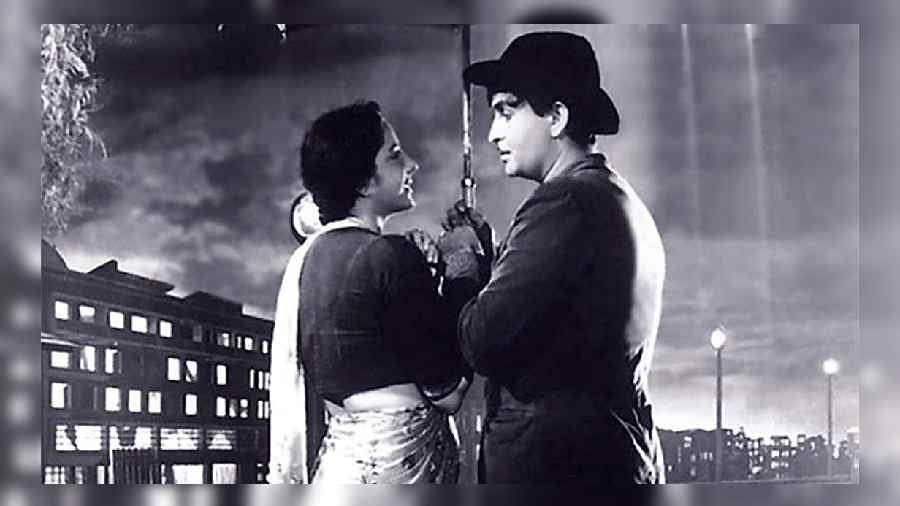Mother India is a cinematic masterpiece from the Golden Age of Hindi cinema that portrays the hardships and struggles of an Indian village woman named Radha (played by Nargis) as she tries to provide for her family in the face of adversity. The film is a beautiful representation of Indian culture, tradition and family values. The story is emotionally gripping and the performances are nothing short of outstanding.
The film’s director, Mehboob Khan, has done a tremendous job of capturing the essence of rural India and showcasing the deep-rooted traditions that define the country. One of the most striking aspects of Mother India is its depiction of rural life. The film captures the vibrancy and chaos of village life, highlighting the customs and traditions of rural India. The cinematography and music in Mother India are both outstanding and greatly contribute to the film’s overall impact and emotional resonance. The cinematography is breathtaking, adding depth and richness to the film. The camera work beautifully captures the essence of rural India with its lively landscapes by showcasing the natural beauty of the countryside, highlighting the agricultural landscape, the bustling village markets and the local customs and traditions. The film’s use of light and shadow is also impressive, creating a sense of depth and texture that brings the scenes to life.
The music is soulful and the songs are both entertaining and thought-provoking, which adds depth and emotion to the film. The soundtrack, composed by Naushad, is a fusion of traditional Indian music with Western orchestration. The songs are beautifully composed and sung and they complement the film’s narrative and themes. The music also helps to evoke the emotions of the characters and heightens the impact of the dramatic moments in the story. One of the film’s most iconic songs is Duniya mein hum aaye hain which captures the spirit of the film with its upbeat tempo and catchy melody. The song O gaadiwale is also a standout, as it uses the sounds of a train to create a sense of movement and urgency.
Radha is played brilliantly by Nargis, who delivers a powerful performance that is both moving and inspiring. Her performance is raw and bold, and she captures the essence of a mother’s love and sacrifice. She struggles to raise her two sons (played by Sunil Dutt and Rajendra Kumar) and support her family after her husband becomes disabled, and she faces numerous challenges as she tries to maintain her honour and dignity in a patriarchal society. She effortlessly portrays the challenges and sacrifices that Radha endures to provide for her family and protect their honour. Her portrayal of a mother’s love and selflessness is heartfelt and resonates with audiences even today.
The film also has an underlying message about the impact of industrialisation and the erosion of traditional values. The character of Radha represents the rural, agrarian way of life, while the villainous character of Sukhilala (Kanhaiya Lal) personifies the greed and corruption that can accompany modernisation.
Overall, Mother India is a cinematic gem that deserves all the accolades it has received over the years. It is a classic film that has stood the test of time and continues to captivate audiences with its compelling storyline and superb acting. Its message about the strength of women and the importance of tradition and family values resonates even today. (Which is your favourite film from the Golden Age of Hindi Cinema ... April 7) Sunandita Kundu
Without blinking an eyelid, I declare Sholay as my favourite movie from the Golden Age. It has all the qualities we look for when we go to watch a movie in the theatre. The confluence of multiple sagas is deftly shown so as to evoke unforgettable feelings among the viewers.
The extraordinary script, a very special soundtrack and soothing songs simply take us to another world of show business. We remained glued to our seats even when the movie ended. All actors acted so well that it was hard to distinguish any among them as the hero! The director Ramesh Sippy did such a splendid job making the superstars appear even more super. Even the villain (Gabbar Singh, played by Amjad Khan) of the film has remaineda household name. BN Das
There are a few favourite films of mine from the Golden Age of Hindi Cinema. Shree 420, starring Raj Kapoor and Nargis. Then Baazi, with Dev Anand and Geeta Bali. Chaudhvin Ka Chand with Guru Dutt and Waheeda Rahman and Mughal-e-Azam, the iconic film of Dilip Kumar and Madhubala. I would like to mention that not only Hindi cinema, the 1950s and ‘60s was also a golden age of Bengali cinema, where we had movies starring Uttam Kumar and Suchitra Sen. Mohua Sen Dasgupta

Waheeda Rehman and Dev Anand in Guide
The golden era of Hindi cinema ranges between the 1940s and 1960s and there are a lot of creations which are worthy of mention, but I will pick Awaara or Shree 420, both directed by Raj Kapoor, as my favourites. He made cinema both timely and timeless. While addressing the daily lives of the downtrodden, the tragedy of the protagonist transcends the barriers of time. Be it Pyaar hua ikraar hua or Awaara hoon, the songs are all-time favourites. The voices of Lata Mangeshkar, Mukesh, Md. Rafi, Manna Dey still resonate in our ears.
Raj Kapoor’s vision was 100 years ahead of his time and his films were extremely popular abroad as well. Awaara was also nominated at the Cannes Film Festival. His films reflected the aspirations of the impoverished masses of a nation just out of imperial clutches, dealing with the questions of poverty, corruption and employment. Kapoor was a visionary whose relevance is still felt. For any cinephile who loves to explore great international maestros and their cinema, Raj Kapoor is a must (apart from Satyajit Ray) and Kapoor’s films are true classics. Himel Ghosh
The Golden Age of Hindi Cinema — the 1950s and 1960s — gifted us with so many memorable movies. My favourite film from that golden era surely is the 1965 Dev Anand and Waheeda Rahman movie Guide. This Vijay Anand-directed film also won several important awards. The story of the film was heart touching. The acting of both Dev Anand and Waheeda Rehman as the central characters Raju and Rosie respectively, were simply outstanding. All the songs in the film were melodious too! Sourish Misra










